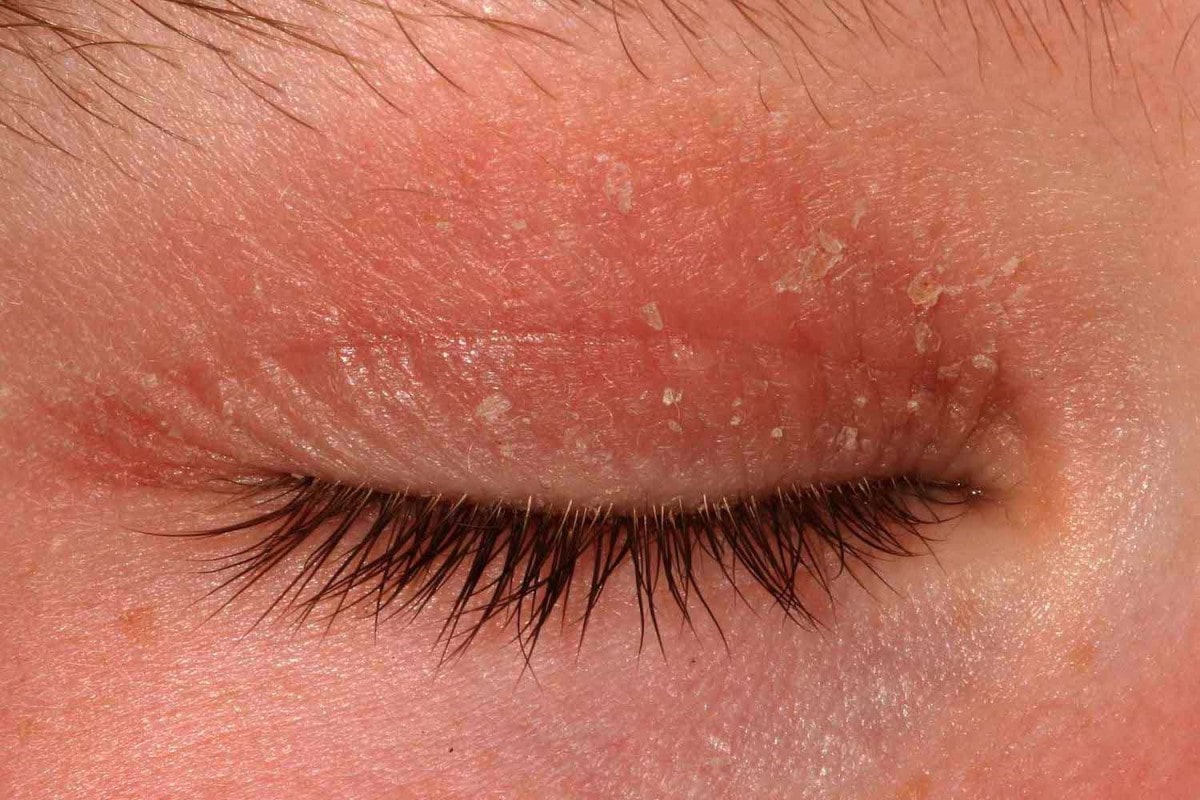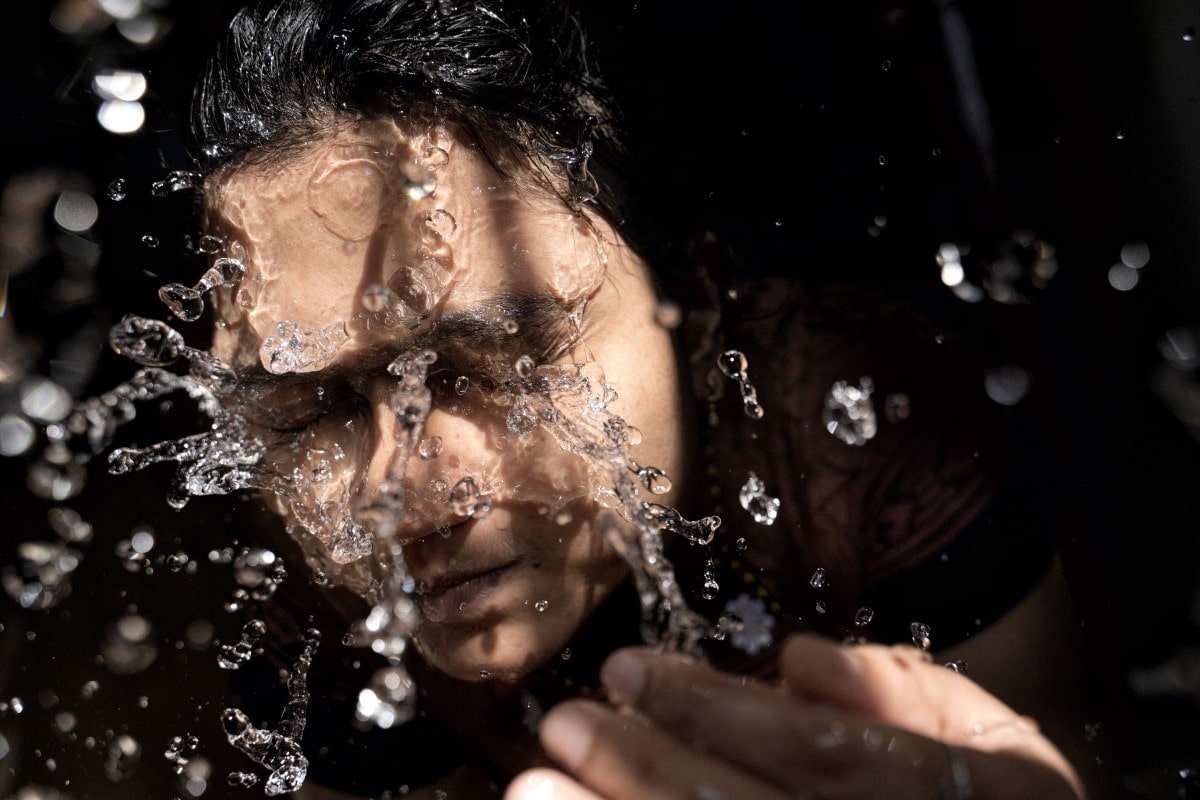What is Eyelid Dermatitis?
Have you ever felt like your eyelids have been itching the entire day? You might think this is a normal phenomenon, but in reality, you might be suffering from eyelid dermatitis.
Eyelid dermatitis is pretty typical for any age. However, it has its unique health risks, especially during certain seasons of the year. Let’s talk more about this eye condition as you scroll below.
What is eyelid dermatitis, and why does it happen?
Eyelid dermatitis is a type of contact dermatitis, and it’s a common skin condition. In fact, about 15-20% of people worldwide will probably experience it at some point.[1]
Some people also call this condition eyelid eczema, periocular dermatitis, or periorbital dermatitis.
When it occurs, the symptoms develop on the skin folds above and below your eye. Fortunately, this skin condition is easy to avoid when you know your triggers, such as:
- AllergensAllergens include various things like pollen, animal dander, and certain foods. Get an allergen test from your doctor to identify what might trigger your allergies.
- IrritantsHarsh chemicals in cosmetics, soaps, and detergents can cause eyelid dermatitis. So, don’t forget to check the labels before you put anything around or on your eyelid.
- GeneticsWhile it’s not a hereditary condition, some people are likelier to get eyelid dermatitis than others. You might be at higher risk if you have a history of asthma and hay fever.
- Skin conditionsA weak skin barrier can be more prone to irritation. If you have sensitive skin or you’ve experienced other skin conditions like atopic eczema, that puts you at high risk of eyelid dermatitis.
- Extreme weatherSometimes, what happens to your skin might be out of your control. Something like extremely cold or hot weather can trigger eyelid dermatitis. It might also occur if the air is too dry or too humid.
How to tell if I have eyelid dermatitis?
The common symptoms of eyelid dermatitis are easy to spot and include:
- Redness
- Swelling
- Itching
- Burning or stinging sensation
- Scaly skin
- Blistering
- Pain around the eye
You also need to consider that people can experience this skin condition differently. Here are the different types of eyelid dermatitis and how you can identify them.
- Contact dermatitisThis happens when your skin comes in contact with an allergen or irritant. Contact dermatitis is also the most common type. In one study, around half of diagnosed cases of eyelid dermatitis are all because of allergic contact.[2]
- Atopic dermatitisThis is a chronic condition that’s linked to allergic reactions. You’d know if you have atopic dermatitis if it causes dry, itchy eyes and skin.
- Seborrheic dermatitisThis type of dermatitis creates red, scaly patches on your skin. For some, this condition creates stubborn dandruff. It can also affect your scalp, face, chest, and eyelids.
Getting proper treatment for eyelid dermatitis
If you think you have eyelid dermatitis, the best course of action is to call your doctor immediately. Afterward, you can get immediate relief from the pain with these options;
Topical corticosteroids
Topical corticosteroids, like steroid-based creams and ointments, can soothe the swelling and dryness of your eyelid. However, you should be cautious about using these.
Be careful about this option, though. Excessive usage of corticosteroids can make them less effective over time. It might also induce side effects like acne, hair growth on the applied area, and skin thinning.
If a cream or ointment like this is applied closely to the eye for a long time, it might increase the risk of glaucoma. So, make sure to consult a doctor first before using a topical corticosteroid.
Antihistamines
Oral medication like antihistamines can work if you’re not a big fan of topical creams. Universally known as the cure for allergy flare-ups, an antihistamine can ease the inflammation and itchiness of your eyelid.
Moisturizers
Aside from taking meds, a good moisturizing cream can relieve sore and irritated skin. That’s especially true if the cream includes soothing ingredients like aloe vera. Plus, you don’t need a prescription to buy one.
Moisturizing creams can be a great fighting agent against mild eyelid dermatitis. Just ensure it’s gentle, fragrance-free, and made for sensitive skin. As mentioned earlier, aloe vera is a natural option that’s safe to use on your eyelids.
Avoidance of skin triggers
Knowing what triggers your skin and allergies can go a long way. Does your eyelid skin react to pollen? Or does it get irritated by something else?
Avoid skin triggers as much as you can with these tips.
- Make dietary changes when necessary.
- Avoid makeup and skincare products that might irritate your eye.
- Check if your soap has harsh chemicals, and don’t expose your skin for too long.
- Wear protective eye gear during allergy season, such as a sturdy pair of glasses.
Eyelid hygiene
Like any other body part, you must keep your eyelids clean and healthy. They are the protective layer between your eyes and the environment, keeping your vision safe.
Maintaining eyelid hygiene can be as simple as these steps:
- Remove all eye makeup with a gentle cleanser and a damp cloth.
- Be gentle in cleaning your eyelids. Don’t tug or rub the skin too hard.
- Don’t forget to rinse the cosmetics or debris away from your eyes with warm water.
- Make sure that your hands are clean every time you touch your eyelids.
Can anything go wrong in treating my eyelid dermatitis?
While eyelid dermatitis is temporary and might not be a big deal for most people, it can still lead to some health risks. These risks tend to increase the longer you leave conditions ignored or try the wrong treatments.
Untreated eyelid dermatitis can lead to:
- InfectionScratching or rubbing the infected eyelid can create open sores for infection.
- ScarringAn inflamed, open sore left untreated for too long can have permanent consequences. For one, it can scar your eyelid.
- Chronic inflammationIf it happens once, it can happen again. Untreated eyelid dermatitis can leave your skin sensitive and more prone to inflammation.
Be cautious about itchy eyelids
While it’s normal to rub the itch away from your eyes occasionally, it becomes an entirely different story if the eyelid itch persists. That might count as a symptom of eyelid dermatitis.
Leaving eyelid dermatitis untreated can lead to more significant risks like infection and scarring. At the very least, consult an eye doctor immediately for help. If you enjoyed content like this, check out Mouqy’s blog for more info about eye care and health!
References
- “Eyelid Dermatitis”, Cleveland Clinic.
- “Eyelid dermatitis: an evaluation of 447 patients”, Ayala F, Fabbrocini G, Bacchilega R, Berardesca E, Caraffini S, Corazza M, Flori ML, Francalanci S, Guarrera M, Lisi P, Santucci B, Schena D, Suppa F, Valsecchi R, Vincenzi C, Balato N. (2003)

Written by:
Jamie Mendiola













